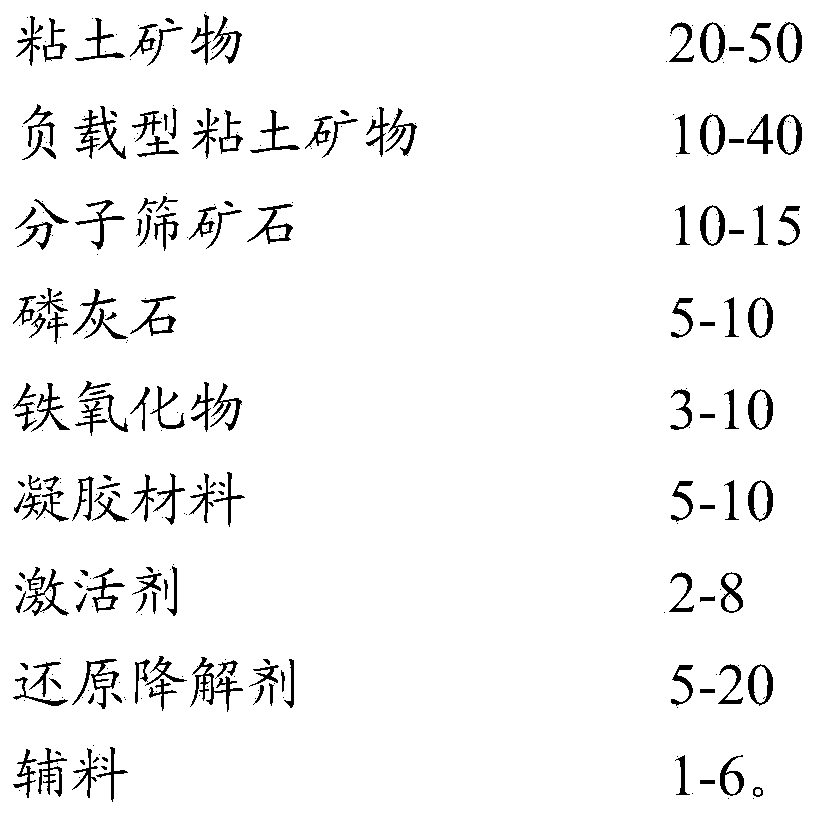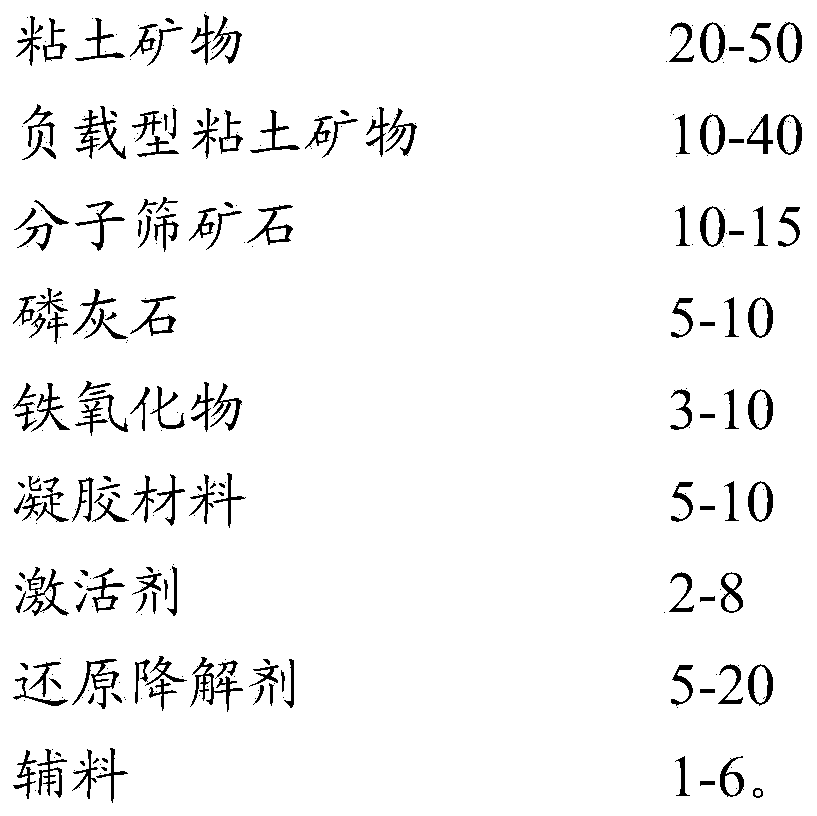Reductive degradable stabilizer of polluted soil, bottom mud and sludge as well as preparation method and using method of stabilizer
A technology of polluted soil and stabilizer, applied in the restoration of polluted soil, soil conditioning materials, chemical instruments and methods, etc., can solve the lack of heavy metal and organic stabilizers, reduce the proportion of stabilizers added, and cannot change the total amount of pollutants. and other problems, to achieve the effect of excellent stabilization effect, reduced leaching toxicity, and convenient subsequent treatment and utilization.
- Summary
- Abstract
- Description
- Claims
- Application Information
AI Technical Summary
Problems solved by technology
Method used
Image
Examples
preparation example 1
[0074] Preparation Example 1: Preparation of Loaded Clay Minerals
[0075] Soak sepiolite with 1mol / L hydrochloric acid aqueous solution, then rinse with deionized water until neutral, and dry; then use 1mol / L FeCl 3 The solution is infiltrated so that its cation exchange capacity (CEC) is completely covered by Fe 3+ Saturation; after washing with deionized water to remove excess ions in the non-electrostatic adsorption state on the particle surface, use NaBH 4 The reducing agent converts Fe 3+ Reducted to zero-valent iron, the nanometer iron-loaded clay mineral was prepared, named as the loaded clay mineral-1.
preparation example 2-5
[0076] Preparation Example 2-5: Preparation of Supported Clay Minerals
[0077] Except using kaolin, illite, montmorillonite or attapulgite instead of sepiolite, preparation examples 2-5 were carried out in the same manner as preparation example 1, and kaolin, illite, montmorillonite loaded with nano-iron were obtained. Clay minerals of soil or attapulgite, and named as loaded clay mineral-2, loaded clay mineral-3, loaded clay mineral-4 and loaded clay mineral-5.
Embodiment 1
[0079] Stabilization treatment of heavy metal polluted soil
[0080] In a small electroplating factory in Shanghai, the heavy metals in the soil of the site were mainly chromium, nickel, and lead, with the highest concentrations of 841mg / kg, 2279mg / kg, and 632mg / kg, respectively. After testing to determine the scope and depth of pollution, use an excavator to dig out the contaminated soil and temporarily store it on the land next to the site with anti-seepage materials. Use a screening crusher to screen and crush the soil to remove large solids. Spray an aqueous solution of ferrous sulfate with a mass concentration of 10%, and the aqueous solution spraying mass is 10% of the soil mass, and stir evenly.
[0081]In parts by mass, 20 parts of sepiolite, 10 parts of loaded clay mineral-1, 10 parts of zeolite, 5 parts of yellow-green apatite, 3 parts of goethite, 5 parts of calcium silicate, 1 part of pumice, 2 parts of sulfuric acid Calcium is mixed and ground, and the mixed mate...
PUM
 Login to View More
Login to View More Abstract
Description
Claims
Application Information
 Login to View More
Login to View More - R&D
- Intellectual Property
- Life Sciences
- Materials
- Tech Scout
- Unparalleled Data Quality
- Higher Quality Content
- 60% Fewer Hallucinations
Browse by: Latest US Patents, China's latest patents, Technical Efficacy Thesaurus, Application Domain, Technology Topic, Popular Technical Reports.
© 2025 PatSnap. All rights reserved.Legal|Privacy policy|Modern Slavery Act Transparency Statement|Sitemap|About US| Contact US: help@patsnap.com



